
SOP compliance is crucial for industrial units to meet operational efficiency and cost parameters. However, complying with industrial SOPs has been a major challenge for industrial organizations. We’re all aware of the challenges that SOP surveillance presents. It can be a time-consuming and error-prone task.
While non-compliance causes several issues on the legal, health, and safety front, as well as business continuity, brand reputation, and profits.
The Factory’s Act 1948
In India, this act covers workers’ health, safety, working hours, and hazardous processes on the premises of factories, construction sites. etc.
Different components of inspections checklists are:
- Environment. dust, gases, fumes, sprays, lighting, noise, and ventilation
- Buildings. windows, doors, floors, stairs, roofs, walls, and elevators
- Containers
- Electrical
- Fire protection equipment, Fire safety exits
- Hand tools
- Hazardous products
- Materials handling
With AI video analytics, organizations can now automate the inspection of the above checklists compliance by analyzing already installed camera feeds in real-time improving operational efficiencies and reducing fines.
Video analytics solution for Industrial Safety and Automation
The current surveillance system can only monitor and track the site remotely. With a fast-paced, high-demand industrial unit, where rapid turnover means more production, raw materials, inventory, and logistics due to this, manual CCTV monitoring in such a wide and complicated industrial area can be an error-prone and time-consuming task.
The use of artificial intelligence and machine learning into existing surveillance systems can aid in the verification of SOP consistency across diverse industrial processes. Video analytics can provide insights into the production process and worker efficiency, allowing one to discover areas for improvement and take action to avoid future failure. In the event of a deviation from compliance, real-time notification and alerts are provided to the organization’s management, providing constant updating and accurate information. It improves the organization’s efficiency while also ensuring its safety and security.
It involves processing footage from the camera, classifying, indexing images, and based on defined rules detect as normal or abnormal activity. It detects if any suspicious behavior is occurring in the field of view of the camera and automatically gives real-time alerts and notifications to the authorized person.
This automates the process, thus eliminating the need for manual monitoring, significantly minimizing the possibility of a potential hazardous safety breach being overlooked e.g. during staff breaks or when they are distracted by other things.
In another use case, you also automate object counting straight through the cameras.
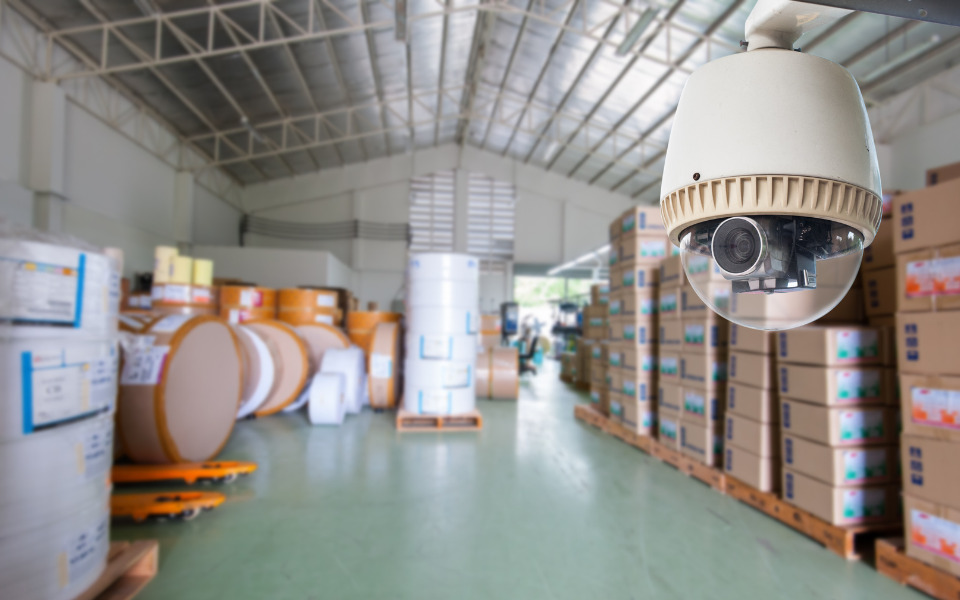
Here are some of the most popular use cases
1. Automate inventory count at loading/ unloading
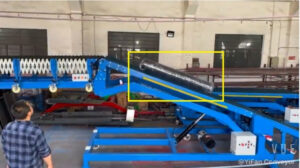
With AI you can automate the counting directly through the camera. Deep learning models can be trained for this purpose
- Keeping track of the exact number of rolls loaded and unloaded from the truck thus reduces fraud and errors in manual calculation.
- Integrate with weighbridge system to identify any fraud during goods loading or unloading.
- Trigger alerts for an assembly line that has become stuck and is laden with rolls.
- Get a consolidated report for all the goods loaded by time from any site on a single dashboard automatically at the end of the day.
2. Automate inspection of SOP compliance such as Crane SOP compliance
On-site crane lift operations are typically labor-intensive. As a result, lift safety is strongly dependent on the operator’s understanding of potential risks
a. Secured Crane hook locking before load lifting
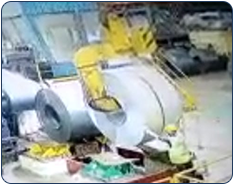
Improper crane locking can lead to mishaps. With video intelligence, you can monitor if the crane hook is properly positioned and generate timely safety warnings to avoid accidents. The crane arm and hook can be continuously monitored to send out alerts in the event of mechanical problems or improper locking/unlocking of crane hooks. Any loaded crane movement with an unlocked hook can trigger a local alarm so corrective actions can be taken in time.
b. Crane Signal Management
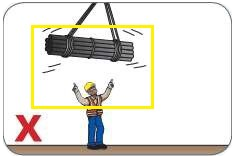
Construction sites are extremely loud and boisterous. As a result, Signaler’s crane hand signals provide a straightforward answer to crane operators’ communication problems for coordination. When moving and dropping big loads around humans is not monitored or blind lifts, these cranes may cause accidents.
As a result, with help of AI-powered video analytics, you can
- Observe, detect, and track the Signaler’s various signal motions and alert when corrective actions are needed to be taken
- To ensure that suitable signals are issued to the crane operator by just one person—the Signaler, if two people are detected it will alert the authorized personnel
- To ensure that no one other than the Signaler is in the vicinity of the crane’s operating area.
3. Ensure that staff are wearing the required personal protective equipment (PPE)
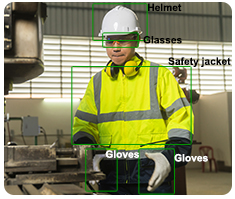
Even though most people are used to wearing PPE (Personal Protective Equipment), they occasionally forget to wear gloves, apron, boots, face covers, helmets, and so on. The entry cameras, just before people walk into work areas, can automatically recognize uniforms, and do authentication to remind them to wear the missing or required protection equipment, such as face covers, head gears, or hand covers. Send out timely alarms or messages to remind them to wear PPE and help improve or maintain everyone’s safety.
4. Reduce danger by restricting access to high-risk areas
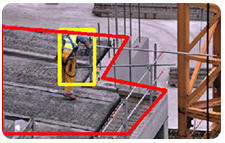
AI BOTs can continuously monitor the camera feeds to detect workers in risk zones; if a person enters a risk zone ROI, he or she can be alerted with a buzzer or beeper sound, letting him or her know he or she is in a risk zone and is not permitted to enter. This helps enforce necessary compliance and promote safety.
5. Instant Notification for Camera tampering and offline alert

When a camera is disconnected, blocked, or de-focused, an alarm is delivered to the appropriate person, who must take quick corrective action. Different frames are examined to detect tampering, and triggers are sent to signal camera tampering as soon as its viewing is disrupted.
To Summarize
Industrial SOP compliance is a very important part of business for industrial operational efficiency. It ensures that the company is able to maintain its standards and deliver the best possible service to its customers.
There are many companies that use AI in order to automate their industrial SOP compliance process. This has allowed them to save time and money and improve their overall efficiency
AIVID is an AI-Powered Inspection automation platform with a simple ready-to-deploy Central monitoring platform that aggregates all your video camera streams across multiple factory locations to automate video inspection and generate automated reports and build insights based on data gathered over time. These insights will show patterns & trends which management teams would want to know about, like loading or unloading patterns at different sites, and help make data-driven decisions.
For additional details, contact our experts, who can demonstrate the technology’s application and assist you in improving it.